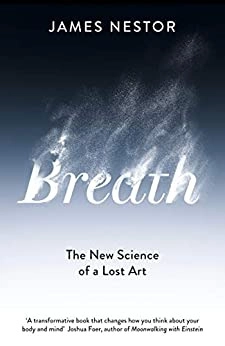Reading Level
What is the reading level of Breath: The New Science of a Lost Art?
Analysing the books in the series, we estimate that the reading level of Breath: The New Science of a Lost Art is 9th and 10th grade.
Expert Readability Tests for
Breath: The New Science of a Lost Art
| Readability Test | Reading Level |
|---|---|
| Flesch Kincaid Scale | Grade 7 |
| SMOG Index | Grade 10 |
| Coleman Liau Index | Grade 9 |
| Dale Chall Readability Score | Grade 7 |
Reading Time
4 hrs 32 mins
How long to read Breath: The New Science of a Lost Art?
The estimated word count of Breath: The New Science of a Lost Art is 67,890 words.
A person reading at the average speed of 250 words/min, will finish the book in 4 hrs 32 mins. At a slower speed of 150 words/min, they will finish it in 7 hrs 33 mins. At a faster speed of 450 words/min, they will finish it in 2 hrs 31 mins.
| Breath: The New Science of a Lost Art - 67,890 words | ||
|---|---|---|
| Reading Speed | Time to Read | |
| Slow | 150 words/min | 7 hrs 33 mins |
| Average | 250 words/min | 4 hrs 32 mins |
| Fast | 450 words/min | 2 hrs 31 mins |
- Authors
-
James Nestor
More about Breath: The New Science of a Lost Art
67,890 words
Word Count
for Breath: The New Science of a Lost Art
7 hours and 18 minutes
Audiobook length
Description
AN INSTANT NEW YORK TIMES BESTSELLERNo matter what you eat, how much you exercise, how skinny or young or wise you are, none of it matters if you’re not breathing properly.There is nothing more essential to our health and well-being than breathing: take air in, let it out, repeat 25,000 times a day. Yet, as a species, humans have lost the ability to breathe correctly, with grave consequences. Journalist James Nestor travels the world to figure out what went wrong and how to fix it. The answers aren’t found in pulmonology labs, as we might expect, but in the muddy digs of ancient burial sites, secret Soviet facilities, New Jersey choir schools, and the smoggy streets of São Paulo. Nestor tracks down men and women exploring the hidden science behind ancient breathing practices like Pranayama, Sudarshan Kriya, and Tummo and teams up with pulmonary tinkerers to scientifically test long-held beliefs about how we breathe. Modern research is showing us that making even slight adjustments to the way we inhale and exhale can jump-start athletic performance; rejuvenate internal organs; halt snoring, asthma, and autoimmune disease; and even straighten scoliotic spines. None of this should be possible, and yet it is. Drawing on thousands of years of medical texts and recent cutting-edge studies in pulmonology, psychology, biochemistry, and human physiology, Breath turns the conventional wisdom of what we thought we knew about our most basic biological function on its head. You will never breathe the same again.
